If you ever asked yourself why everyone loves Paris, then glossy Trocadéro and the Palais de Chaillot, not to mention Place de la Concorde, are three perfect reasons. Join me down the memory lane to one sunny August morning as we pay homage to the cultural heritage and vibrant spirit of France on its National Day, 14 July. Vive la France!
A few years ago we visited Paris, the city of lights, on a tour de force. After an intercontinental flight dawn found us at glossy Trocadéro. Next we searched for the secret of Palais de Chaillot. We let our gaze slide across the field to the Eiffel Tower. We strolled, like true flâneurs, to the Champs-Elysées and the Arc de Triomphe, then further to the surroundings of Palais Royal Musee du Louvre, found shade by the Carrousel du Louvre, and we also climbed the Eiffel Tower and enjoyed its light-show by night.
Glossy Trocadéro, “The Troca”
If you arrive by metro, like a true Parisien, as you exit you only round a corner and rush up the stairs for it is waiting for you. And you know it. With its iconic Esplanade du Trocadéro:
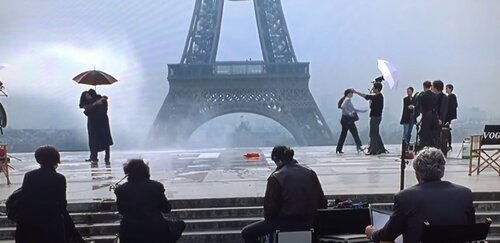
My favorite memory of the Esplanade du Trocadéro, before even seen it for the first time, was from the 1995 movie Sabrina with Harrison Ford and Julia Ormond (above).
As you rush up the stairs and you turn left, although at least from photos you do know what to expect, the sight still catches your breath.
The glossy black and white marbled floors and the classic sight of the Eiffel Tower and a romantic one too.
Because of the marble’s reflective quality even the people walking across it become part of the landscape. Have patience. The colors reflected by the marble will change based on whether and the time when you’re visiting.
Well worth admiring again, viewed from between the two wings of Palais de Chaillot, reflected in the polished marble floor tiles of the Trocadéro esplanade:
The Paris Skyline from Trocadero

Why I love Trocadéro
After the end of World War II it was here, at Palais de Chaillot, that the Universal Declaration of Human Rights, drafted by Eleanor Roosevelt, was received: at Parvis des droits de l’homme (Human Rights Square).
It is said that to protect its secret documents at the Palais de Chaillot, NATO ordered a five-story-high safe equipped with a lift. This allowed documents to travel between floors without having to be transported across the entire headquarters by security guards. Classified documents were still transported under permanent surveillance.
And… the marble floor at Trocadéro stuck to my retina after being featured in countless movies I enjoyed: Sabrina (the 1995 production with Julia Ormond and Harrison Ford) or Mission Impossible:

Palais de Chaillot is guarded by statues, left and right. Pigeons too. A monument’s biggest threat, apart pollution.
The Trocadéro golden statues by Musée de l’Homme:
Le Matin (Morning) and Les Fruits (The Fruits):


If you can remove yourself from underneath their slumbered view, you advance to the balcony, and see this:
Eiffel Tower, La Dame de Fer (the Iron Lady):
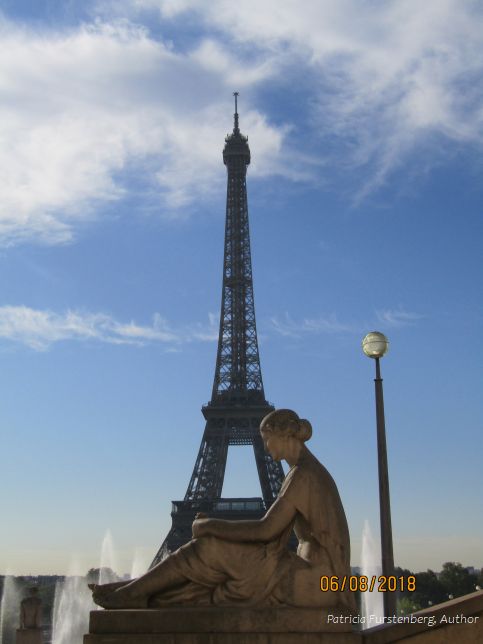
A WW2 Less Known Parisian Story
Some might remember a 1940 picture of Adolf Hitler standing on the esplanade, posing in front of the Eiffel Tower. Hitler dreamed to ride to the top, no doubt to gloat as he took in the panorama of Paris spread beneath, but that was another dream that eluded him. Members of the Resistance, who had been part of Eiffel Tower’s permanent maintenance crew before the war, tricked the German guards one night and secretly climbed up, shortly before Hitler’s visit. They severed the elevator cables disabling the whole lift system. The cables weren’t replaced until 1946.
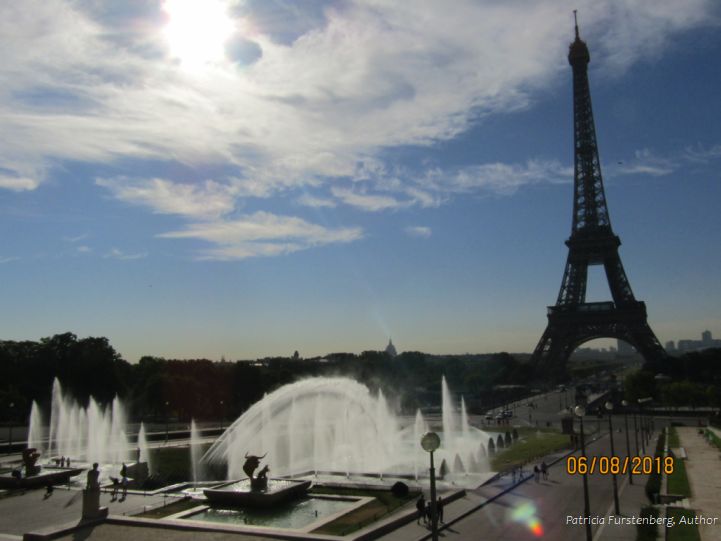
Eiffel Tower, color or black & white, I love them both:

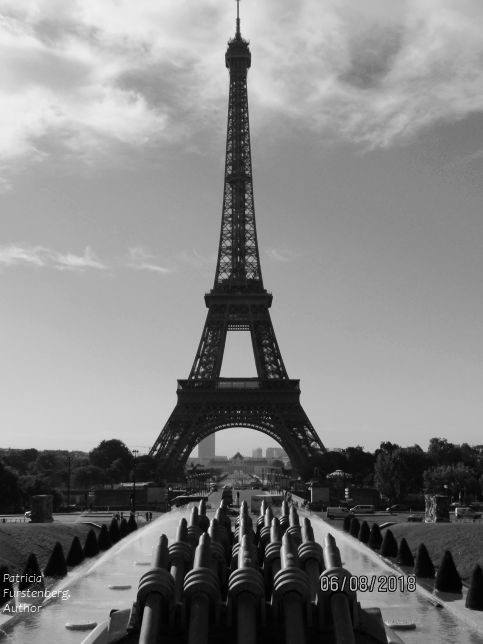
It was 9:15 and the sun was already unforgiving, making me wish I was a little kid, oblivious to all social norms. What stopped me from jumping in for a splash? I could smell the ozone in the air, its vapors drifting with the breeze, a welcomed, cool touch on my face. The shallow pool was winking.
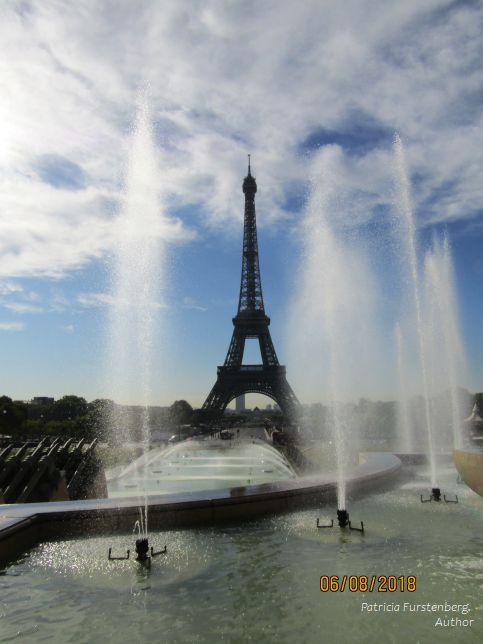
A hidden story about Esplanade Trocadéro: a palace that lasted Only 57 years
One lesser-known story about the Esplanade Trocadéro in Paris revolves around its transformation during the 1878 Exposition Universelle. This world’s fair showcased technological advancements, cultural exhibits, and architectural marvels. At the time the Esplanade Trocadéro was a simple square, but for the Exposition it underwent a stunning metamorphosis.
The renowned French architect Gabriel Davioud designed a grand architectural ensemble known as the Palais du Trocadéro. This masterpiece featured majestic pavilions, fountains, and cascading waterfalls, creating a breathtaking spectacle for visitors. The central highlight was a vast concert hall with a seating capacity of over 6,000 people.
What makes this story particularly fascinating is the innovative use of electric lighting at the Palais du Trocadéro. The building was adorned with numerous electric lamps, making it one of the earliest examples of large-scale electric illumination. This mesmerizing display of lights added a magical ambiance to the already spectacular setting, enchanting the fair’s attendees.
The Palais du Trocadéro was demolished in 1935 to make way for the Palais de Chaillot, built to house yet another exhibition, the “International Exhibition of Art and Technology in Modern Life 1937”.
Enchanting Palais de Chaillot
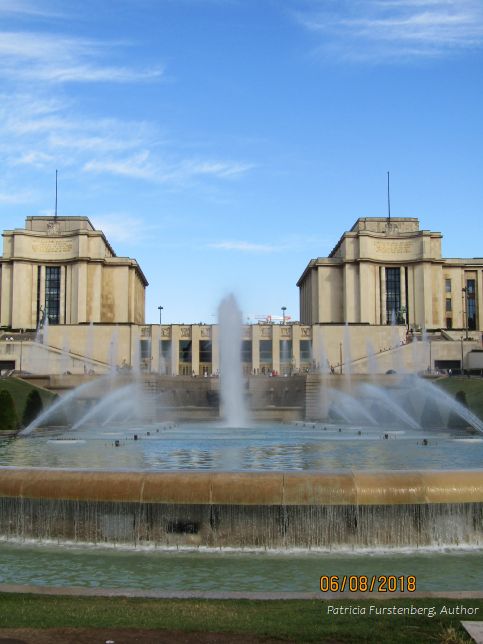
Palais de Chaillot, Secret Discovery or Forgotten Legend?
It is said (and it is your choosing if you believe or not) that deep within the majestic halls of Palais de Chaillot lies a secret whispered only by the walls themselves. Legend has it that during the construction of the palace an ancient artifact was discovered buried beneath its foundation. It is said to be a mystical relic imbued with extraordinary powers, capable of bestowing luck and prosperity upon anyone who touches it. Though hidden from public view, the artifact’s presence is believed to infuse the atmosphere of Palais de Chaillot with an enchanting aura, inspiring creativity and igniting the dreams of all those who enter. Only a privileged few are aware of this hidden gem, adding an air of intrigue and magic to the grandeur of the palace.
A verse from the poem Paul Valéry wrote especially for the frontispiece of Musée de l’Homme, at le Palais de Chaillot, this 1930s landmark:
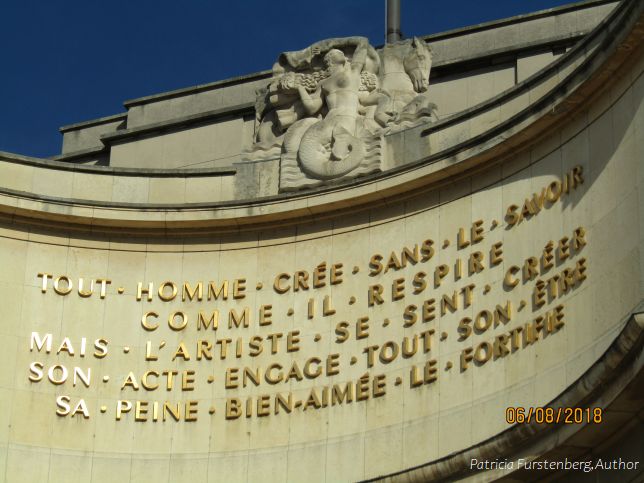
“Il dépend de celui qui passe
Que je sois tombe ou trésor
Que je parle ou me taise
Ceci ne tient qu’à toi
Ami n’entre pas sans désir.”
(Paul Valéry)
“It depends on those who pass
Whether I am a tomb or treasure
Whether I speak or am silent
The choice is yours alone.
Friend, do not enter without desire.”
(Paul Valéry)
Secret: there are five museums at Palais de Chaillot: the Architecture Museum (Cité de l’Architecture), Anthropology Museum (Musée de l’Homme), the Théâtre National de Chaillot, Maritime Museum, and the Paris Aquarium (with a nocturne show).
And beneath everything there are countless tunnels and caverns, as everywhere in Paris, some of the best known being the Catacombs of Paris. Some of the ancient catacombs that became quarries date back to the Roman era, and it’s illegal to enter.
Another Trocadéro Secret:
Not so long go, underneath Trocadéro, after following some of the tunnels and caverns twisting and spiraling, the police discovered a secret underground lounge, bar, dining area wired for phones, strung with lights, with seating carved in the rock bed. A secret movie theater for film-noir movies, based on the tapes discovered on place.
Jardins du Trocadéro
Water cannons near Jardins du Trocadéro, the Gardens of Trocadero:
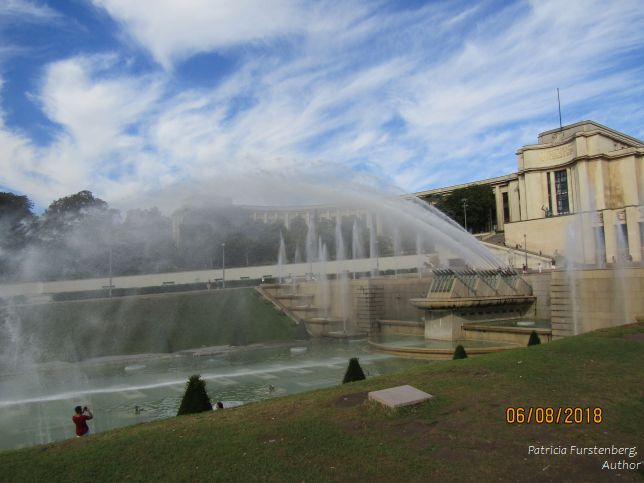
From Jardins du Trocadéro we made our way to Place de la Concorde (30min by foot or faster and cooler by Metro).
Place de la Concorde
One Confidential Detail about Place de la Concorde:
One unusual aspect of Place de la Concorde is its historical significance as a site of public executions during the French Revolution. It was here that the guillotine was set up after it’s been in Place de Grève and Place du Carrousel. Many prominent figures were executed, including King Louis XVI (it was King Louis XV who built Place de la Concorde), his wife Marie Antoinette, and members of the revolutionary government like Danton and Robespierre. The square’s dark history stands in stark contrast to its current appearance as a beautiful and bustling public space in the heart of Paris.
Originally Place de la Concorde was bordered (defended?) by moats.
Flanked by elegant Avenue des Champs-Élysées and mysterious Jardin des Tuileries, Place de la Concorde, shaped as an octagon, is decorated with eight astonishing statues representing eight major cities of France: Brest, Rouen, Lyon, Marseille, Bordeaux, Nantes, Lille and Strasbourg.

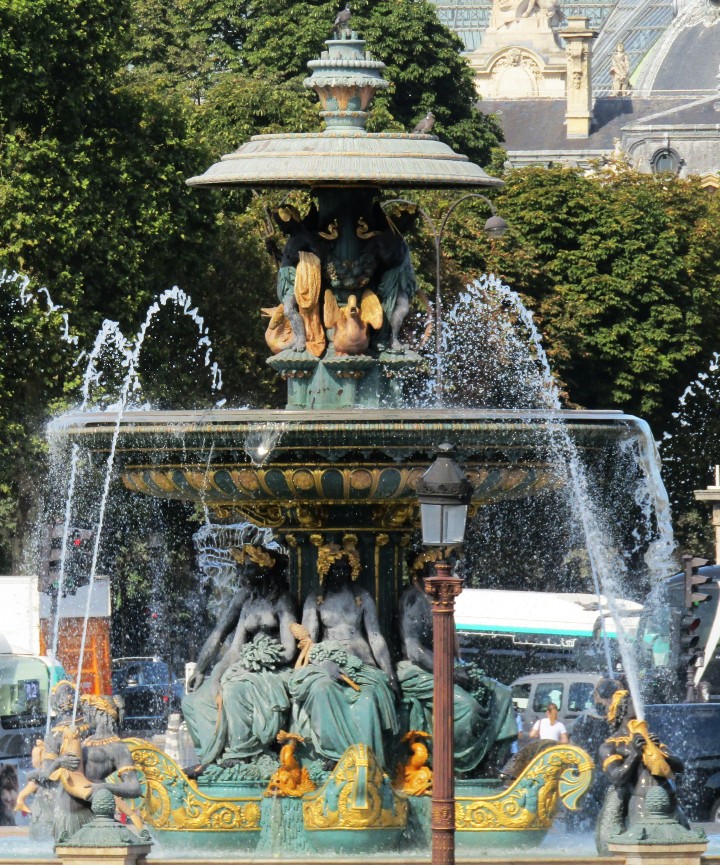

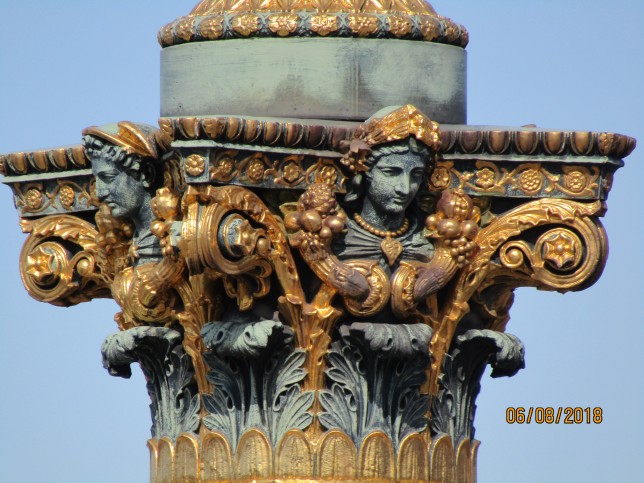
Look at these Art Nouveau artistic lamp posts in Place de la Concorde, the largest public square in Paris:
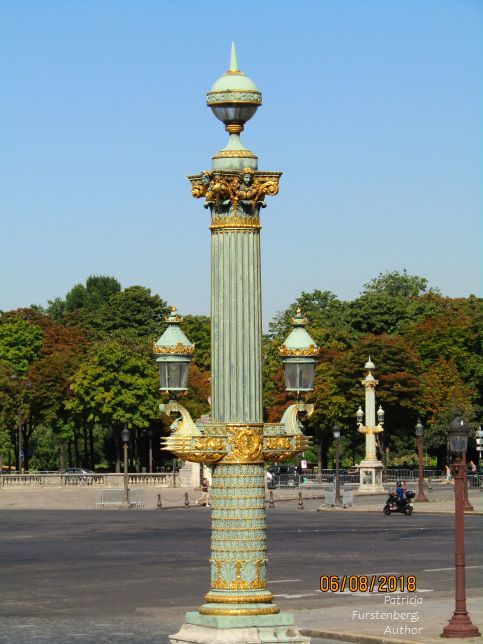
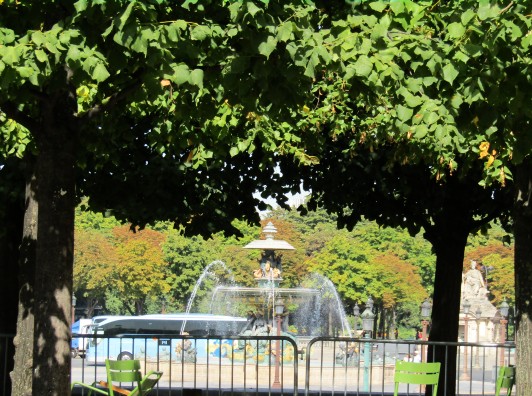
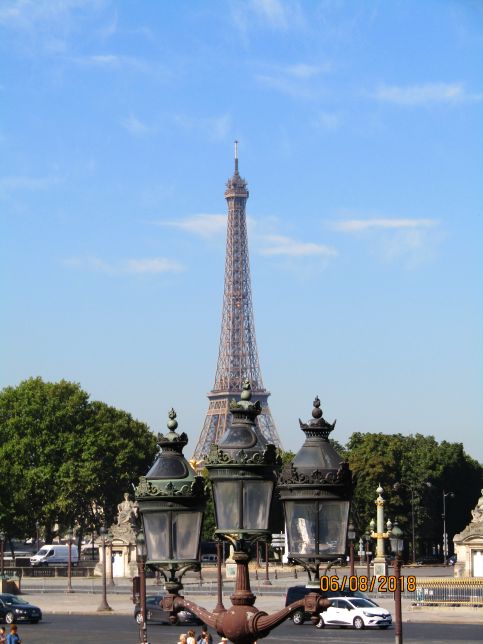

Above: Eiffel Tower viewed from Place de la Concorde, more lamp posts at Place Concorde and view from the gardens..
Eiffel Tower, Luxor Obelisk (a 3000 years old granite gift from Egypt to France from 1829) and another lamp post from Place de la Concorde, below:
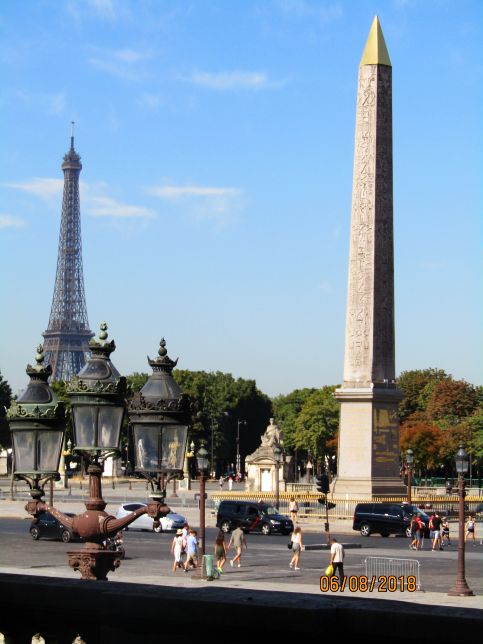
By the foot of the Luxor Obelisk, a plaque serves as a reminder of the sad events that once happened here.
The French National Day is the anniversary of the Storming of the Bastille on 14 July 1789, marking the start of the French Revolution. It was the beginning of the end for the monarchy. It represented a call for liberty, equality, and a more democratic form of government.

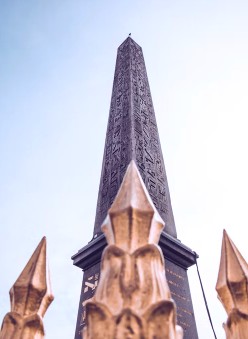
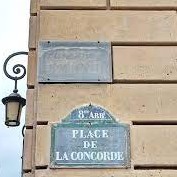
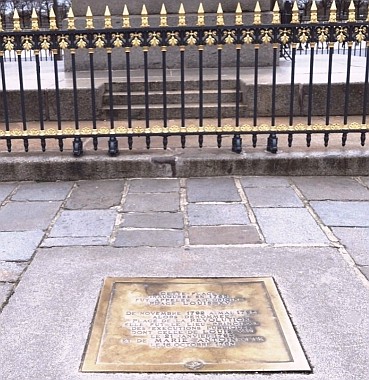
In the heart of modern Paris, where the grandeur of history mingles with the pulse of the present, lies the notorious Place de la Concorde.
Once a theater of bloodshed and revolt, it now stands as a testament to the stark contrast between past and present. Around it, the City of Lights bustles with life but the echoes of its dark past whisper through the air, reaching deep into the soul of this hallowed ground. Amidst the ceaseless flow of cars and the cacophony of voices, one can almost discern the haunting cries and frenzied shouts of a bloodthirsty mob that once gathered here.
The guillotine, a bloodthirsty fixture, a wood and metal vampire, claimed its victims with a chilling finality; its blade, poised like a deadly dancer, descending amidst the collective roar of the crowd.
Now, the bustling crowd of tourists is oblivious to the secrets buried beneath the polished pavement, while the ghosts of the past continue to roam, their anguished cries echoing through the centuries.
We are not done with Paris yet. Until we’ll admire its arches and towers in another blog post you can play a little game, guessing which doors are from Paris and which from Bucharest, or compare postcards and guess the city of origin.
Since we reveal secrets, discover the sinking house of Paris and the fastest route to Mona Lisa.
Down the memory lane, time travel to see the Cathedral of Notre Dame before the April 2019 fire.
A piece of advice, open secret: use le Metro, the subway, while in Paris
We used le Metro extensively during our holiday in Paris, and it took us everywhere we wanted to go. That, and the extensive use of our legs… You get the hang of the Paris metro pretty soon, it is fast and reliable. Each metro line has a different color, and the exists are well marked, especially the historical monuments they lead to. Because we had such little time in Paris we planned every detail, checked Metro routes, spent time on Google Maps and printed a few walking routes too. We also bought online the tickets to visit the Eiffel Tower and the Louvre (skip the queue), to save time.
Love history, mysteries and traveling? Then my book Dreamland is for you:

Find my latest books on Amazon.
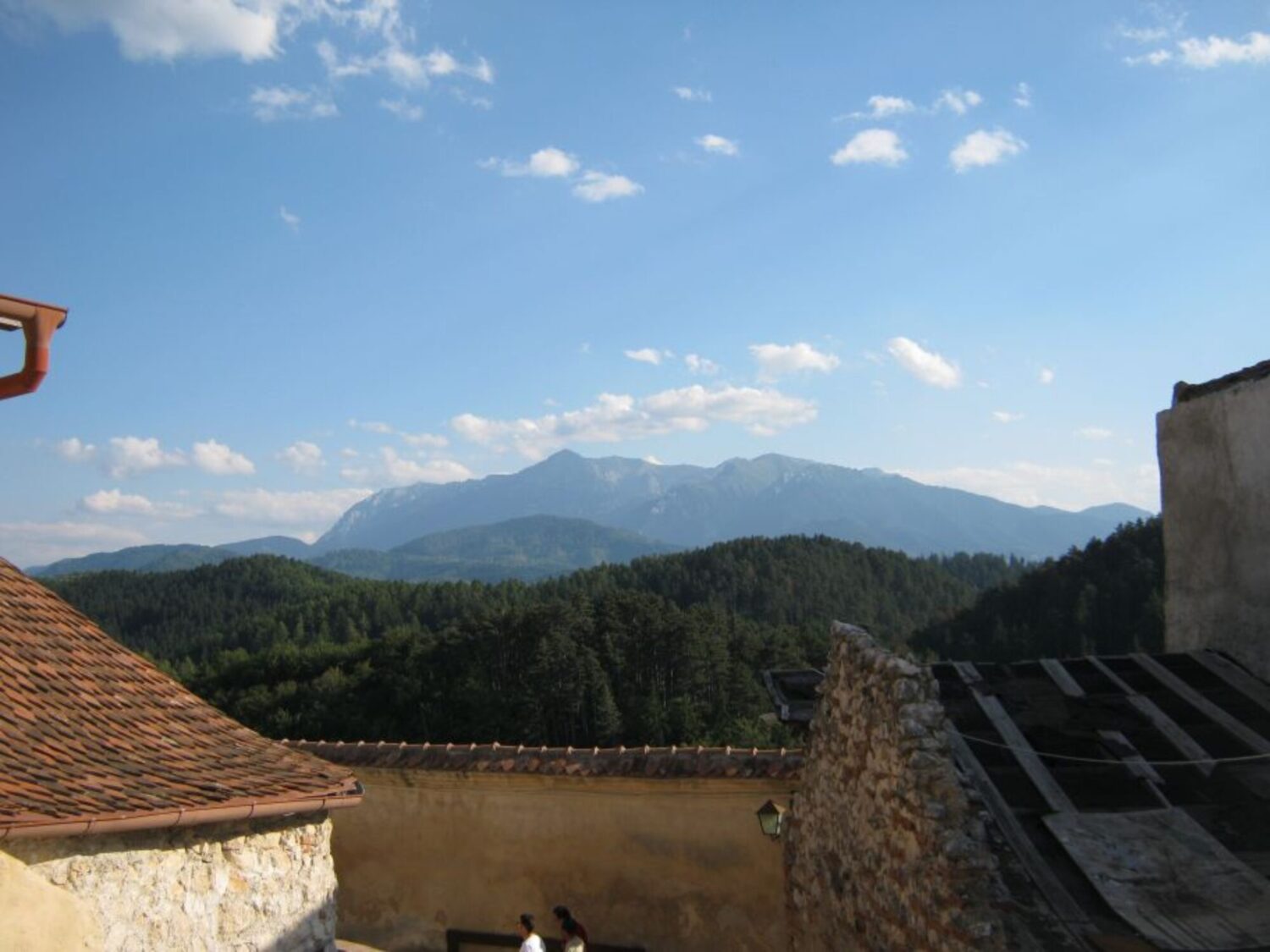
Hi Patricia, this is a great post. Your adventure in Paris was interesting. I would love to visit Paris.
Paris Will Wait for you.
You make Paris sound fantastically mysterious and romantic, Patricia. I love the stories (like the Eiffel Towers cables being cut, and the history, and of course, the art. What a trip that must have been. I don’t know if I’ll ever get there, which makes your post extra special.
I am so glad you found something here that resonated with you. I’m attracted to history too.
I think that any place has some mystique that bubbles under the surface, waiting to be brought into daylight.